If you have rust stains on your porcelain tiles, there are a few ways to remove them. The most common and easiest way of removing the rust stain is by using a poultice of household items like salt and vinegar or lemon juice and baking soda. However, you can also use muriatic acid for this task, damaging the tiles more than other methods.
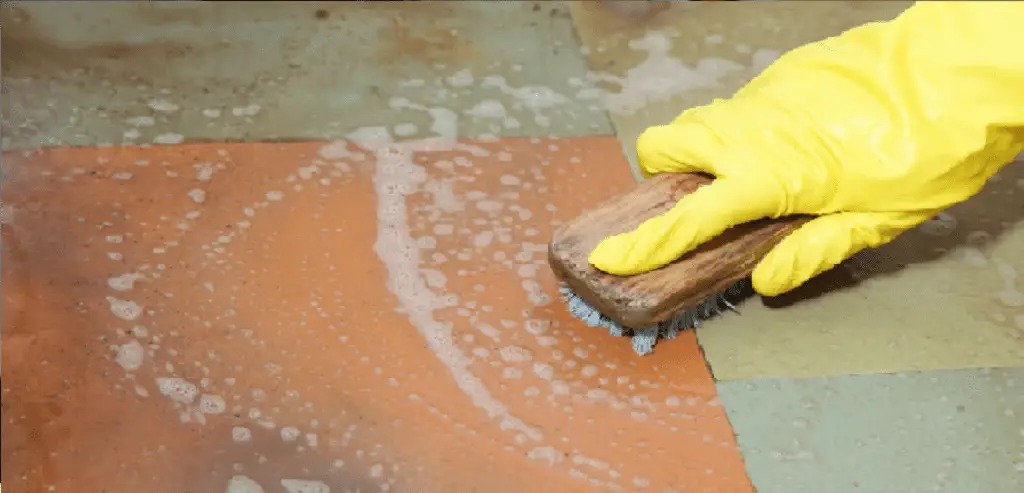
There are some more complicated ways of removing these stains, including using hydrogen peroxide with ammonia to bleach out the stain where it is not chemically possible due to being absorbed into porous materials such as ceramic tile grout lines. In this article, we’ll explore how to remove rust stains from porcelain tiles.
Materials You Are Needed
- Rubbing Alcohol
- Hydrogen Peroxide
- Bleach
- Toothbrush or Scrub Brush with stiff bristles
- Water
- Mop
- Rags or Paper Towels
9 Steps to Follow on How to Remove Rust Stains From Porcelain Tiles
Step One: Determine if the Stain is Rust
You should test whether what you think is rust is rust. Mix a little bit of dish soap with hot water and mix it around. Using a toothbrush, scrub the area where the stain was to see if it starts bubbling up any rust stains mixed in with dirt or grime. If this doesn’t happen and you’re sure it’s rust, move to step two.
Step Two: Apply Baking Soda Paste with a Toothbrush
Mix baking soda with just enough water to create a thick paste painted on the porcelain tile without dripping all over the floor. Next, paint this mixture onto the completely dry stain. Allow it to sit for about 20 minutes before you try scrubbing the area.
Step Three: Scrub the Stain with a Toothbrush and White Vinegar
Use a toothbrush to scrub vigorously at the stained area. If this still doesn’t remove the stain, add about two tablespoons of vinegar into your baking soda paste mixture and continue scrubbing. The vinegar will help the baking soda get deeper into the porcelain tile.
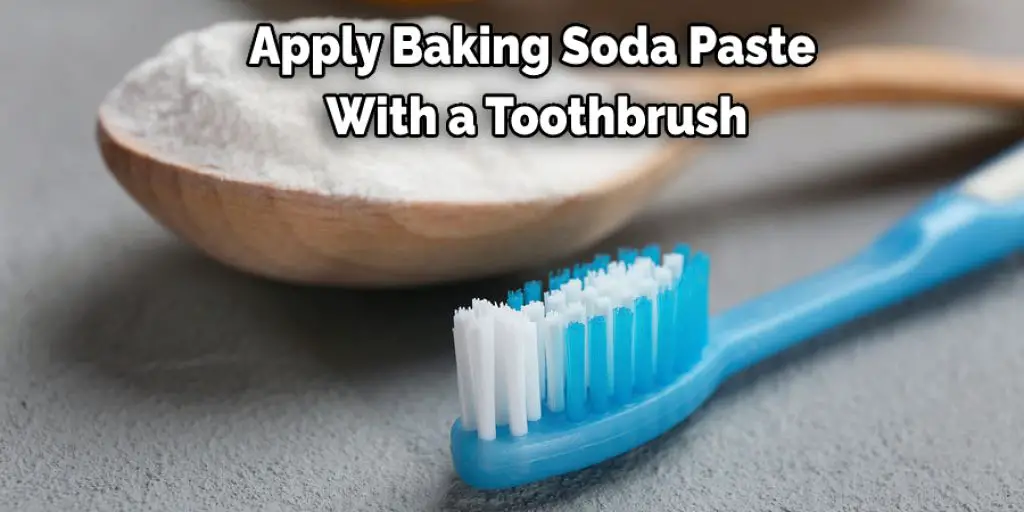
Step Four: Apply Hydrogen Peroxide
Using a paintbrush, apply hydrogen peroxide to the area and allow it to sit for at least 20 minutes. You may notice that the stain starts turning yellowish as you wait this amount of time. Once you’ve waited long enough, begin scrubbing with a toothbrush again to remove the stain.
Step Five: Apply Baking Soda Paste with a Paintbrush
After you’ve scrubbed the stained area again, use a paintbrush to apply more of the baking soda paste mixture. Allow it to sit for about an hour before rinsing the paste away.
Step Six: Rinse with Water
You can use a spray bottle or cup to rinse the area with water after the paste has been sitting for an hour. If you notice that there are still rust stains in the porcelain tile, continue following steps three through five until all of the stains are removed.
Step Seven: Clean the Tile Using a Grease-Cutting Dish Soap
Once your tile is completely rinsed with baking soda paste, you need to clean it. Use a grease-cutting dish soap with water and scrub the entire surface until all residue from the stain is gone.
Step Eight: Remove the Water with a Shop Towel
Once you’ve scrubbed the surface until it appears clean, use a shop towel to remove all of the water that’s remaining on the tile. A fan may be used as well if there isn’t much wind where you are or if you don’t own a shop towel. Repeat the cleaning process again if the rust stains are still visible.
Step Nine: Apply a Clear Coat to the Tile for Long-Term Protection
Once you have completely removed all rust stains from the porcelain tile, your last step is to apply a clear coat of polyurethane varnish or paint so that new stains can’t form. This will seal the fresh look of the tiles and keep their shine intact.
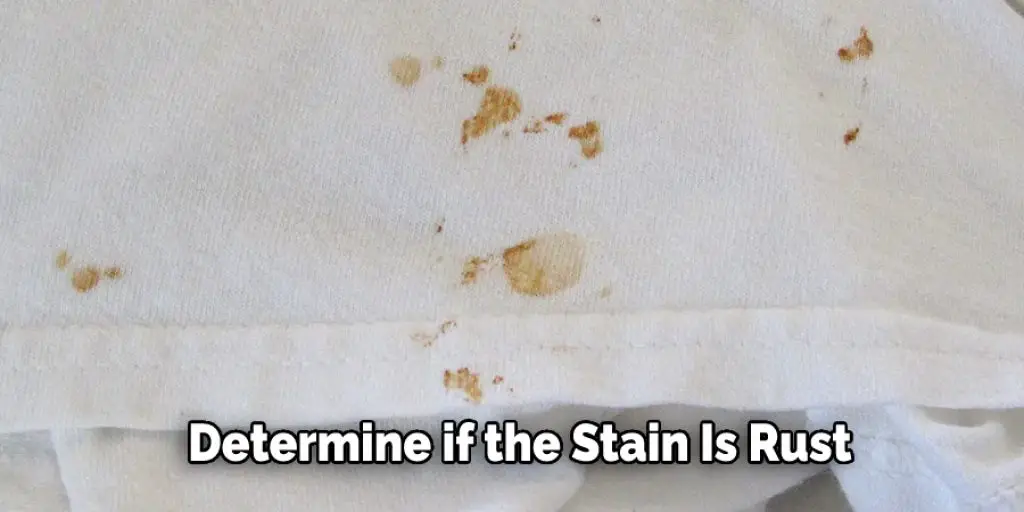
Step Ten: Test Your Porcelain Tile for Stains
Before you attempt any cleaning process, test the porcelain tile in an inconspicuous area. Make sure that your chosen method of stain removal does not remove the glaze on the tiles as well.
If the tiles are still glazed, use a single-sided razor to gently scrape off the glaze on the stained area before applying any cleaning method. This will allow for more effective stain removal. If you use the steps outlined above for how to remove rust stains from porcelain tiles, you can do it yourself.
Is Vinegar Safe for Porcelain Tile?
At its core, vinegar is a diluted form of acetic acid. Of course, the concentration of the acetic acid in regular household white distilled vinegar is much higher than that of car battery acid or toilet bowl cleaner, but it still has enough potency to irritate human skin and damage most surfaces if used incorrectly.
If you are intent on using vinegar to remove rust stains from your porcelain bathroom tile, make sure that it’s diluted with ample amounts of water. Do not use vinegar undiluted. Doing so may result in damage to the substrate. Instead, dilute the vinegar with water, and you will be able to remove rust from porcelain bathroom tile without damaging the surface.
When You Should Remove Rust Stains From Porcelain Patio Tiles?
Rust stains on porcelain tiles are not a big problem and can be easily removed. However, you should remove rust stains from porcelain tiles if they are built into the tiles. For example, showerheads and knobs for drains may be made of metal that rusts over time. If you have rust stains on these parts of your porcelain tiles, you should remove them with a metal polish.
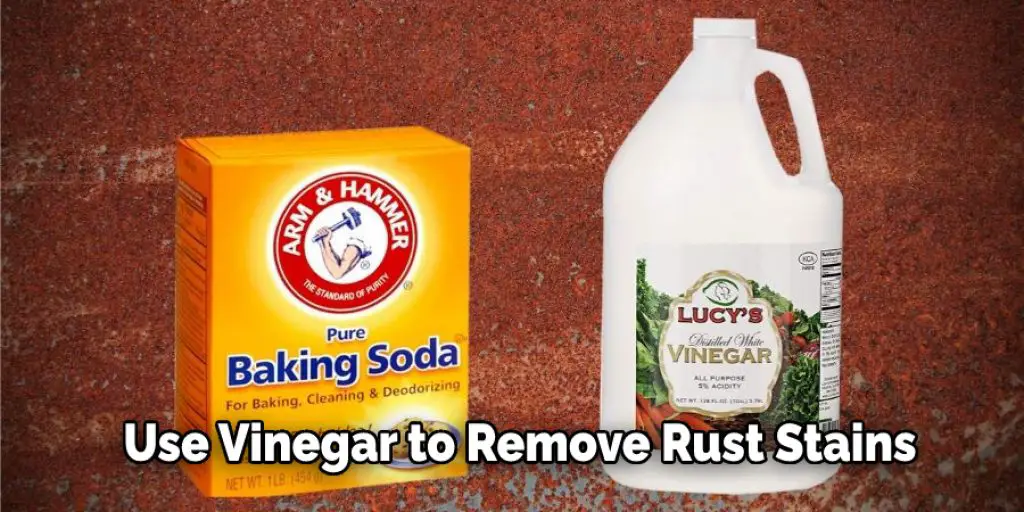
Metal polishes are available at hardware stores, drugstores, and discount department stores. They contain a mild abrasive that buffs out the rust stains. If you have tiles where the surface is made of metal and has rusted, you should also remove those rust stains from porcelain tiles.
Frequently Asked Question
Can Rust Be Removed From Porcelain?
Porcelain is an extremely durable material that can withstand high temperatures. The most common type of porcelain is called vitreous china, and it is used in the manufacture of dishes, cups, vases, plates, and figurines.
To remove rust from porcelain, you need to first clean the surface with a mild soap or detergent and then rinse it with water. Once the surface has been cleaned and rinsed thoroughly, you should use a soft cloth or sponge to scrub away the dirt from the surface. Finally, after you have removed all traces of dirt from the surface of your porcelain item, dry it off using a clean cloth or paper towel before applying any other treatment on top of it.
Does Wd-40 Remove Rust?
Wd-40 is a brand of industrial lubricant that is primarily used for removing rust and other surface contaminants. It also has many other uses, such as lubricating moving parts, stopping squeaks, loosening rusty bolts, etc.
The main active ingredient in Wd-40 is Teflon. This material makes it possible to remove surface corrosion and paint without any damage to the underlying metal.
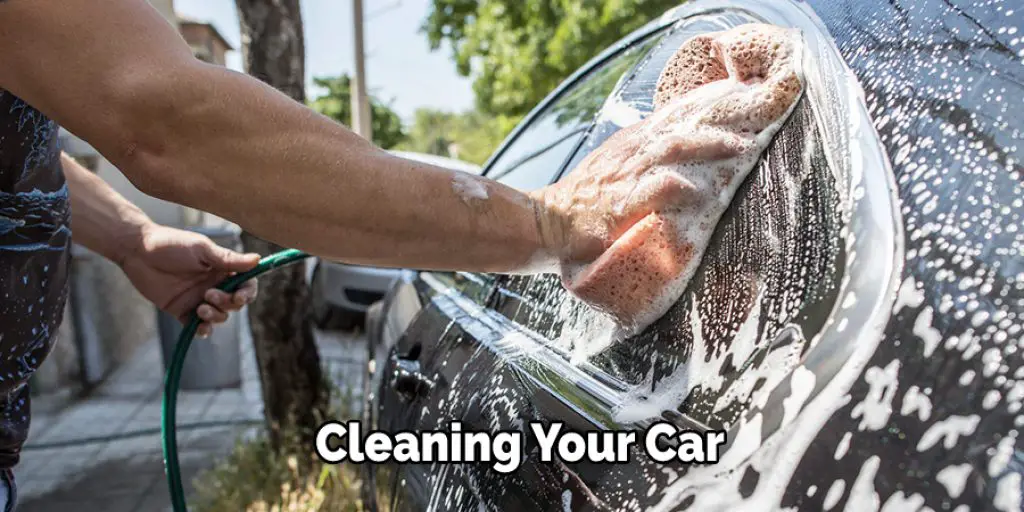
Can Toothpaste Get Rid of Rust?
Toothpaste is an effective and healthy way to remove rust from metal surfaces.
The key is to get the toothpaste wet with water before applying it to the surface.
There are many ways you can use toothpaste for cleaning your car:
- Apply a thin layer of toothpaste on the entire exterior surface of your car and let it dry for about 10 minutes.
- Apply a thin layer of toothpaste to a small, damp cloth and rub in circles until all visible rust has been removed.
- Dip a rag into a bucket or bowl filled with warm water and some baking soda, then dip it into the toothpaste solution you have made previously and scrub off any remaining rust spots on your car’s exterior surface by wiping them clean with the rag (don’t forget to dry off afterward).
Does Baking Soda Remove Rust Stains?
Baking soda can remove rust stains from your car. It is a common home remedy for removing rust stains and will also help to prevent future stains.
There are several steps involved in removing rust stains from your car:
- Rinse the area with water, then use a towel to dry it off.
- Apply baking soda on the stain, making sure that it gets into all of the crevices of the metal surface and sits evenly on top of the surface.
- Wait 5 minutes before rinsing with water again and wiping away any excess baking soda residue with a clean cloth or paper towel to avoid getting baking soda in your eyes or lungs as you rinse off the product from step 2.
Conclusion
The key to removing rust stains from porcelain tiles is using a product that will remove the stain and seal it. That way, if there are any more spills of rusty water in your home, you’re not going to have anything but clean tile on which they can be spilled.
For best results, try buying a neutralizing cleaner such as Zep Commercial Rust Remover & Sealer or BKF Porcelain Tile Cleaner with Neutralizer. By following these simple instructions for how to remove rust stains from porcelain tiles at home, you’ll save yourself time and money while also making sure your floors look fantastic!
Check it out –How to Remove Iron Stain From Tiles .








